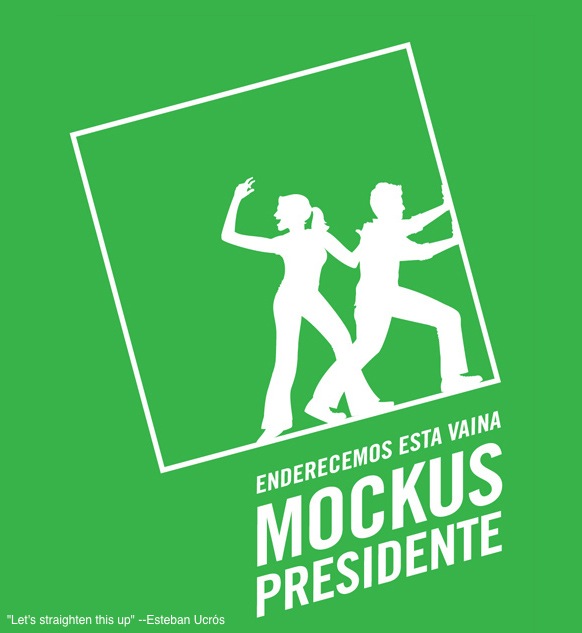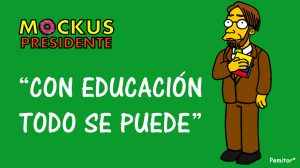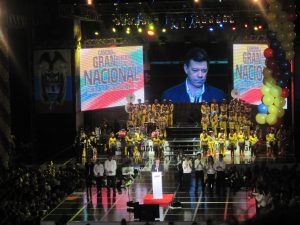The 2010 Colombian presidential race revealed the tensions between not merely two candidates, but two different forms of leveraging political power. Juan Manuel Santos, the heir of two-term president Alvaro Uribe, ran against Antanas Mockus, the former mayor of Bogotá. Santos was portrayed as the continuation of the political pragmatism that was characteristic of the Uribe era. Santos’ politics was associated with longstanding ideals of authority, security and order. In opposition, Mockus crafted an image of anti-corruption and transparency, and presented himself as an icon of political virtue. Accordingly, both campaigns had very different strategies to captivate voters. Santos’ campaign relied heavily on local leaders and local politicians who mobilized their political structures to allocate votes, a process often typified and oversimplified[1] in Colombian public culture as clientelistic networks. Mockus’ campaign appealed to a younger, urban, middle-class vote that was mobilized mostly via web-based social media.
By looking at how the two 2010 presidential campaigns in Colombia used social media, one can trace how notions about politics, individual freedom and political power are being negotiated in the era of rapid information exchange. Political managers in Colombia often make a distinction between “real politics” (disciplined, face-to-face networks of political allegiance where interests are negotiated), and “virtual politics” (political publicity and public opinion management). In their view, elections are only won through real politics, while virtual politics is an important aid, but one that does not win elections on its own. The use of social media for electoral purposes disrupts these neat definitions. Although social media are not political by definition—they can be used for many purposes—they allow something appealing for political and electoral mobilization: the easy and quick coordination of goals among large groups. In the 2010 Colombian presidential elections, the two main campaigns used social media very differently, therefore showing how social media are an open platform that enables different political models to become tangible forms of political practice. Santos’ use of social media was highly managed and pyramidal. Mockus, by contrast, appealed to the spontaneous power of publicity and visibility that the unstructured use of social media generated. Networks such as Facebook and Twitter, were awash with a collective enthusiasm for Antanas Mockus.
Closer to election day, Santos’ team brought in political advisors in order to counteract Mockus’s increasing popularity: the controversial J.J. Rendón as chief strategist and Ravi Singh, a self-alleged (and fraudulent) social network guru.[2] Santos’ strategy had to be redirected. Mockus was unstoppable. He had the support of young people upset with traditional politics and fighting for a radical change in the country’s political culture. Mockus’ way of doing politics reflected this sentiment. Supporters believed that arguments and sentiments representing a collective pursuit of the common good were best expressed in the openness of social media. Mockus’ campaign viewed social media as a transparent space that anyone could oversee and join. In this space, the power of the crowd’s will would mobilize a symbolic political repertoire in order to transform a traditionally corrupt form of political practice led by interest-oriented political brokers. In an innovative political bet, Mockus relied heavily on the publicity pieces that eager individual supporters designed and circulated on Facebook, YouTube, Twitter and Flickr.
The reliance of Mockus’ campaign on the spontaneous support from its followers in order to mobilize a political message of civility, transparency and legality expresses how social media are sometimes conceived for electoral purposes. The main appeal of this medium, according to Internet-campaigning pioneer Joe Trippi (2008), is the interactive interplay between message producers and receivers. The interplay establishes intimate connections between the people and the political message circulating. More than passive consumption, users actively define and engage with political campaigns, they actively participate in democracy, as Trippi enthusiastically puts it. This interpretation of social media for political purposes expresses a fervent belief in these media to be the ideal place for an individual exercise of freedom, for unmanaged, voluntary individual participation to become a collective free will capable of social and political renovation (as Daniel Kreiss also explores in this issue).
Nevertheless, in order to win elections in Colombia, open and voluntary web-based participation was not enough, and Santos’ campaign knew it. On May 30th after the first round presidential election, the polling results showed that the enthusiasm for Mockus was a mirage. Santos won the election by a 25% margin. A public joke circulating the next day in the same social media that glorified Mockus sardonically described his defeat: “Mockus won in Putumayo [the one territory he actually won], Twitter and Facebook.”
The day after the presidential election, I met with President Santos’ main strategist, J.J Rendón. He celebrated victory with a glass of wine. “Mockus’ followers were like a crowd of barbarians; he had many followers but they weren’t organized. When I arrived to Santos’ campaign I organized it, as Roman Generals organized their Legions” Rendón explained. For him organizing the campaign entailed aligning political allies and closely observing the power networks of the country in order to work within them. As Rendón remembers, Mockus may have had the multitude and the publicity on his side, but Santos had politics on his.
Aligning the forces of key political figures with a strong electoral base was decisive for Santos’ victory. As political managers often explain, social media users are not disciplined voters. They are voters that act upon emotion and their votes are highly unreliable. For instance, as Mockus’ campaign showed, there is little control over such voters: most of the people who enthusiastically participated in web scenarios were underage and hence could not vote. In opposition, the votes of established electoral bases, those that are negotiated during ‘real’ in-person interactions and mobilized by recognizable political leaders, are stable and predictable, they are disciplined, like a Roman legion. Political managers code these differences as a problem of class. Social media users participate freely and therefore nothing binds them to their candidate. Electoral bases are expected to participate out of need. Therefore, elections in Colombia are won through the kind of loyalty ties that form and the networks of favor exchange and negotiation of interest built over years between politicians and their constituencies.
The Santos campaign’s use of social media followed this highly managed and vertical form of political practice. Alejandro, a member of Santos’ social media team described his involvement, “when you spot a sentiment on the Internet, you only need to light a match and it starts spreading like a wild fire.” The trick is to control the fire. He was in charge of lighting the fire and keeping it burning. Web developers replicated pyramidal campaign structures of administration that resorted to (human) gatekeepers of information in order to guarantee the efficacy of social media. The web administration team combined administrators and trustworthy members who spread information among their networks. Their task was to keep the campaign message “disciplined,” in line with the rest of the campaign, and to regulate web-based participation to avoid any attacks from hackers.
In this sense, social media in Santos’ campaign resembled public relations, “a vital tool of adjustment, interpretation and integration between individuals, groups and society,” as Bernays (2004:7), the father of public relations writes. This view is similar to Mockus’ understanding of social media in that it recognizes the importance of free and open exchange of information for political projects to survive. But, contrary to Mockus, this notion of publicity in politics stresses the need to manage the flow of information in order to keep a disciplined message that integrates individual with collective goals and emotions, as well as some sort of control in how public issues are perceived. Management keeps the information tight, mobilized strategically, as politics requires.
Electoral politics is intricately strategic (Bourdieu 1991), like a chessboard, and Santos’ campaign knew how to play the political game. The campaign knew where political power lay and it wasn’t on the Internet but within highly managed, tight, local political networks. However, the use of social media for electoral purposes in the presidential race of 2010 challenged straightforward assumptions about Colombian politics for anyone following the elections. For a brief moment in Colombian public culture, unmediated participation in social media was a real possibility of opening the chessboard for anyone to jump in. Social media users saw the possibilities these media have for political renovation. Colombia saw how an amplified, collective voice could shake up established politics. Santos’ campaign trembled with Mockus’ social media popularity. But, after this event, savvy political managers, whose job is to navigate the intricacies of electoral politics, were quick to incorporate these new technologies to their own advantage, as another space where to reproduce established political logics. As events worldwide show, the barbarians await by the city’s doors. The question is whether politics will really change when they come in.


